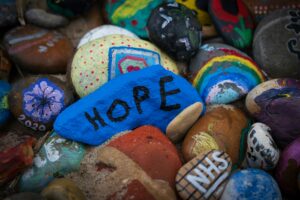Affiliation: Albany, New York – East Greenbush Central Schools & Siena College
Years in the classroom: 6
What is your biggest challenge as a K-12 teacher of multilingual learners?
I think the biggest challenge of this work is the “invisible tax” that English as a New Language (ENL) educators often face. Not only do we carry full loads of planning, instruction, and assessment, we are often asked to step in as interpreters or translators, family liaisons, event planners, testing coordinators for state English Language Proficiency assessments, compliance officers, professional development facilitators, new student registration coordinators, data managers, and more. It can be a lot to manage!
How do you motivate your students?
I keep my students motivated by utilizing the Understanding by Design framework to plan authentic, real-world, and hands-on learning opportunities and assessments. We ask big questions about how our world works and that leads to rich discussion. Relevance and real-world application are key!
How do you stay motivated and optimistic as a professional in this field?
It’s crucial that we find “our people” in order to stay motivated and optimistic. For me this means staying connected with like-minded professionals not just in my building but across the state and country. Learning from others’ work, struggles, and successes is both inspiring and energizing. Additionally, I highly recommend getting involved with your state professional organizations!
Advice for educators working with multilingual students in 2024:
Make multilingual students a priority! Too often the needs of MLs and their families, as it relates to school design, curriculum selection, scheduling, etc., are an afterthought or seen as an inconvenience. With this approach, districts, not surprisingly, are left wondering why ML student outcomes aren’t better. But if we truly care about those outcomes, then we will proactively design educational systems with equity for MLs and other historically marginalized students at the forefront. Look at district, building, and classroom practices and policies through a critical lens and get to work on making the necessary changes that will result in belonging and access for all students.



